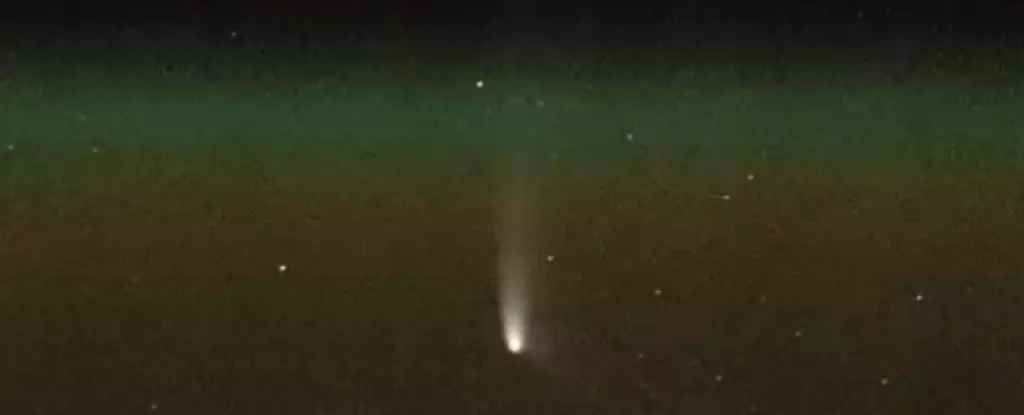In January 2023, astronomers made an exciting discovery with the identification of a new celestial body: Comet C/2023 A3 (Tsuchinshan-ATLAS). While new comets are frequently uncovered, this particular comet sparked significant interest due to its potential brightness. Such enthusiasm often leads to sensational claims, with some suggesting that this comet could be celebrated as the “comet of the century.” However, seasoned astronomers emphasize that predicting a comet’s brightness can be precarious, leaving us to await its arrival for a true assessment.
As of now, Comet C/2023 A3 is visible to the naked eye in the morning skies over Australia and Aotearoa New Zealand. While it isn’t dazzling just yet, observers can spot it as a soft, fuzzy star with the right conditions. Those utilizing binoculars will be rewarded with a clearer view, particularly of the comet’s distinctive dusty tail, which trails behind it as it glides through our solar neighborhood.
From now until around September 30, Comet Tsuchinshan-ATLAS will maintain a relatively constant position in the early morning sky, gradually brightening as its September deadline for closest approach to the Sun (perihelion) on the 27th draws nearer. Expect to find it rising roughly 90 minutes before sunrise, beckoning early risers with its understated beauty.
On September 27, Comet C/2023 A3 will reach its perihelion, coming within 58 million kilometers of the Sun. As it swings around our star, this close encounter typically contributes to an increase in the comet’s brightness. The phenomenon of “forward scattering” of sunlight as the comet passes between the Earth and the Sun could lead to an exceptional display in the morning sky. There lies a tantalizing possibility that if the comet has a substantial amount of dust, it could ignite a brightness surge, possibly up to 100 times its average luminous intensity.
However, the unique dynamics of this celestial dance imply that the comet may be difficult to spot during this period. Its proximity to the Sun would necessitate skilled techniques for observing, and even seasoned stargazers might find it challenging to catch a glimpse without sophisticated equipment.
After making its closest approach, Comet C/2023 A3 is expected to transition from the morning sky to an evening spectacle. Starting October 12, it should be visible as a bright, naked-eye object for several days. Early observers will likely get the benefit of the sunlight’s forward scattering, creating an atmospheric spectacle that could captivate both hobbyists and professionals alike.
The unique arrangement of the comet, Earth, and the Sun means that as the comet moves upwards in the western sky, its tail will extend outward, potentially forming a long and awe-inspiring streak across the night. Although much of the tail may be faint to the naked eye, expert photographers are likely to capture stunning visuals of this cosmic ballet.
Despite the promising outlook, comets are inherently unpredictable. The age-old adage likening comets to cats—having tails and the potential for unexpected behavior—and serves as a reminder that surprises can lurk just beyond expectation. While the current trajectory and behavior of Comet C/2023 A3 suggests it will provide a satisfying show, there exists a possibility that it may fragment or fail to brighten as anticipated. The very nature of cometary composition can lead to unstable behavior as they pass close to the Sun, releasing gas and dust that amplifies visibility.
Thus, if fortune smiles upon viewers, the comet might transform into a breathtaking display resulting from such a breakup. However, if the comet dims quicker than predicted, observers may be left pondering what went awry in prediction.
For amateur astronomers and stargazing enthusiasts, the upcoming days promise a thrilling opportunity to witness Comet C/2023 A3 (Tsuchinshan-ATLAS). With a mixture of excitement and a touch of uncertainty, the celestial community eagerly awaits the unfolding of this event. As we endeavor to catch a glimpse of this celestial visitor, we are reminded of the wonders of the universe and the joyful chaos that comets embody.
As we gear up for what could be an incredible few weeks of comet-watching, let’s prepare our telescopes and binoculars and look skyward. Whether it becomes just another fleeting visitor or a dazzling star of the year, meeting C/2023 A3 is an invitation to marvel at our universe’s beauty and mystery.


Leave a Reply